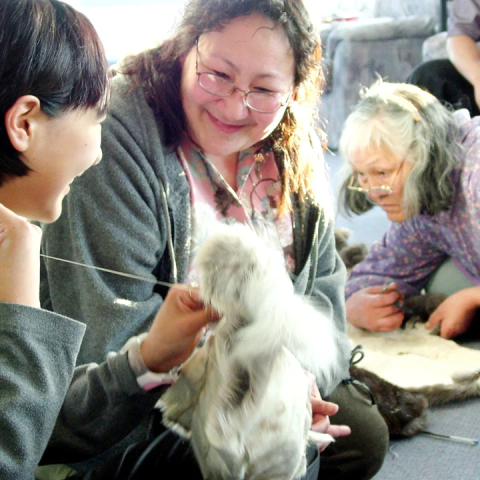Fewer than 600 people can still speak Inuinnaqtun fluently.

These days, most of us have access to technology that allows us to learn the world’s common languages. But countless languages—including many Indigenous languages—can only be learned from their few remaining speakers.
Revitalizing a lost language, as one of our partners in Nunavut is doing, is an important way to preserve not just the language but also the culture that surrounds it.
The Inuinnaqtun language is the cultural foundation of the Inuinnait people, who live in the central Canadian Arctic. The literal meaning of the word Inuinnaqtun is “to be like an Inuinnaq (a person).” Today, fewer than 600 people can still speak Inuinnaqtun fluently. Many lost the language when they were removed from their communities and sent to residential schools.
Pitquhirnikkut Ilihautiniq/Kitikmeot Heritage Society in Cambridge Bay, Nunavut, is working hard to keep Inuinnaqtun alive. One-on-one language immersion sessions with mentors inspire reconnection. Through everyday conversations at home and on the land, mentorship is helping to heal the wounds of systemic oppression.
In partnership with Mission & Service, Inuinnaqtun language mentors get resources to allow them to spend 300 hours a year working with their apprentices to begin to restore the language.
Your gifts to Mission& Service help partners continue to restore language and culture. Thank you.